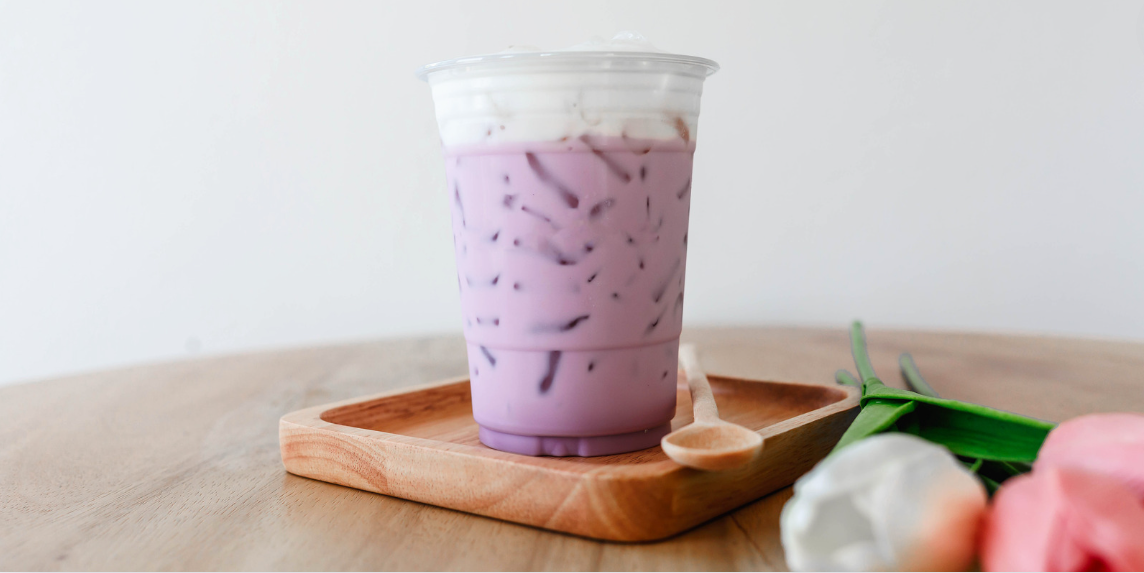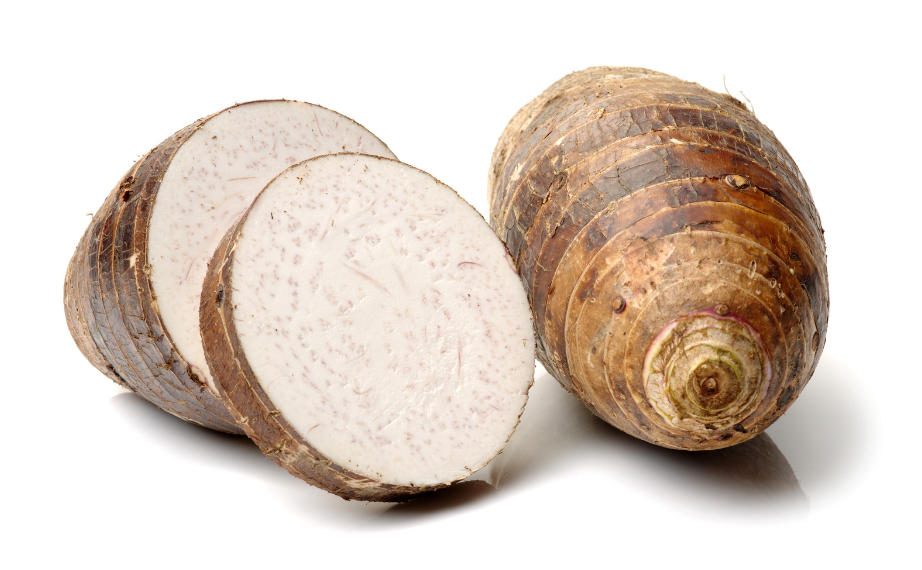What is Taro Bubble Tea?

Taro is thought to have originated in Southeast Asia, however in the modern day it is cultivated in various places such as; Africa, China, New Guinea, various Pacific islands, the Caribbean, parts of Central and South America, as well as specific regions in the United States. Taro is a starchy root vegetable with a brown outer layer and a white flesh that has purple spots. Once made into a tea, taro has a sweet and creamy taste with a hint of nuttiness. One of the most distinctive features of Taro Bubble Tea is its vibrant purple colour, which comes from the purple spots in the flesh of taro.
Taro also has quite a significant cultural importance, for example Taiwan's Tao people, one of Taiwan's indigenous tribes who come from a place called the Orchid Island. The Tao rely on taro for food, and this can be seen as their villages usually have multiple wet taro fields. Additionally, Chinese taro flowers symbolise prosperity, and their unpredictable blooming period signifies resilience. During festivals, taro dishes are more than food, they represent tradition and a hope for prosperity.

What are the health benefits of Taro?
Taro is well known for improving gut health as it contains a high level of fibre and resistant starch which supports your digestive system and can potentially help protect you against colon cancer and inflammatory bowel disease. Whilst it’s rich in fibre, it also contains a wide range of vitamins and minerals including, magnesium, potassium, vitamin C and vitamin E, which are a key part of a balanced diet and maintaining health.
How is taro turned into bubble tea?
The process of turning the Taro plant into Bubble tea involves several steps. The Taro plant can be quite tough and fibrous, requiring a thorough cooking process to achieve the smooth and creamy texture.
- Firstly, the taro root is peeled, cubed and then boiled until it becomes soft. This process helps break down the fibrous texture and makes it easier to blend into a smooth paste.
- Secondly, once the taro is cooked it is then mashed or blended into a fine paste. This paste serves as the base for many taro-flavoured products, including bubble tea.
- Finally, the taro paste is then turned into taro powder or taro syrup in order to preserve it and extend its shelf life. Taro powder is made by dehydrating the taro paste and grinding it into a fine powder. Taro syrup, on the other hand, is made by blending the taro paste with sweeteners and water to create a liquid concentrate.
How could you add Taro Bubble Tea to your shop's menu?
Taro bubble tea is quite versatile and the taste can be changed in many ways due to the different ingredients you add to it.
- Milk – Various types of milk can be used including whole milk, skimmed milk, almond milk, soy milk, and coconut milk.
- Sweeteners – Sweeteners such as sugar, honey, or flavoured syrups can all be added to enhance the sweetness of the taro and complement its natural flavour.
- Tea Base – A base of black tea or green tea are usually used in bubble tea, they vary depending on bitterness so you can adjust for your preference.
In conclusion, Taro has taken the world by storm and its unique taste is something that can bolster any menu. As seen in this blog post taro has a significant cultural meaning with multiple health benefits and given the versatility of taro bubble tea it can easily be integrated into your shop increasing the diversity of flavours across your menu, ensuring business success.
If you are looking for more information about bubble tea and how to start a bubble tea business, simply contact us, and a friendly member of our team will contact you.
